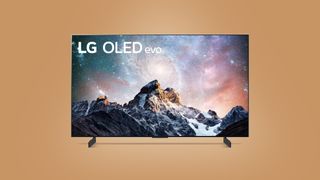I tried the 42-inch LG C2 OLED TV, but I'm going back to the 48-inch
Size matters, folks

The 42-inch LG C2 has been the talk of the town since it was announced last year. As an all-new OLED TV panel size for 2022, reviewers and shoppers alike have been waiting to see how the small-size OLED experiment would fare.
And that included me – I tested the new size to see if you should buy the 42-inch LG C2. But after that period of testing, I’m ready to go back to something with a bit more impact.
Don’t get me wrong, 42 inches is still a good television size – certainly in the UK, where smaller home sizes compared to the US ensure small screens still have a purpose.
But now that I’ve spent a few weeks with a review unit for the 42-inch LG C2, I have to turn my mind to what to replace it with. On the hunt for a TV to buy, rather than test, it doesn’t quite check all the boxes I have in mind.
The beauty of an OLED TV is in its incredible contrast and color precision – making for vivid tones, deep blacks, and bright highlights that truly shine out of the screen. And this is something the 42-inch LG C2 still has in spades.
What I have to keep in mind, though, is the disparity between the 42-inch LG and its step-up 48-inch model, which comes with a few key advantages over the smaller option.

For one, the 42-inch model’s 2.2-channel sound system makes do with only 20W audio output. Ideally you’re connecting any LG OLED TV to a dedicated soundbar or surround sound system – and one day, I’ll take the plunge – but otherwise this is a limiting audio offering alongside such a premium panel. The 48-inch model has the usual 40W expected on C Series OLED screens, which is a notable jump in volume from the smaller size.
Even more importantly, both the 42-inch and 48-inch models are 4K screens, meaning they share the same number of pixels; in the 42-inch, though, those pixels are crammed a lot closer together to fit the decreased amount of screen real estate. This means that you have to be closer to the screen to notice the extra detail, while the density of self-emissive pixels limits overall brightness by a small amount too.
Are you suuuuuuure you can't go bigger?
It also restricts how big a group of people can comfortably crowd around the screen in the average living room. For one, maybe two viewers sitting relatively close, the 42-inch LG C2 should certainly be sufficient; for a family of avid cinephiles on a distant sofa, not so much.
As ever, it depends on your living situation, and the particular dimensions of the room around the television. I found that, having previously spent many months with the original 48-inch LG C1, I noticed the small losses of detail and impact that resulted from a TV that much smaller.
For gaming, especially, I found myself squinting and dragging a chair far closer than I had before to read key text and icons, and concluded that it was a needlessly inconvenient change for the layout of my home.
I say ‘needlessly’ because of the closely-matched prices of the 42-inch and 48-inch LG C2 OLEDs. They share the same retail price in the US ($1,399), while the UK model is only £100 cheaper for the smaller size (£1,299 rather than £1,399). (In Australia, admittedly, you’re looking at a larger AU$300 difference.)
When you get such a clear uptick in screen size, audio output, and pixel density for little-to-no price increase, it’s hard to argue for the 42-inch C2 – unless, of course, the limitations of your home make a larger model genuinely untenable, or you’re intentionally looking for the conveniences of a smaller screen that doesn’t dominate your decor, and can serve as a very premium bedroom TV.
For my part, I can just about cram a 48-inch TV into the recess in my living room wall – and cram I shall.
Get daily insight, inspiration and deals in your inbox
Get the hottest deals available in your inbox plus news, reviews, opinion, analysis and more from the TechRadar team.
Henry is a freelance technology journalist, and former News & Features Editor for TechRadar, where he specialized in home entertainment gadgets such as TVs, projectors, soundbars, and smart speakers. Other bylines include Edge, T3, iMore, GamesRadar, NBC News, Healthline, and The Times.

